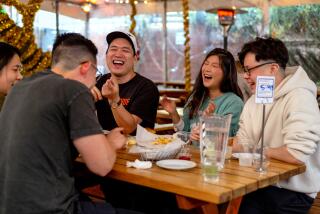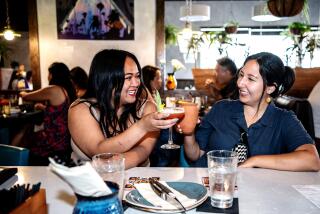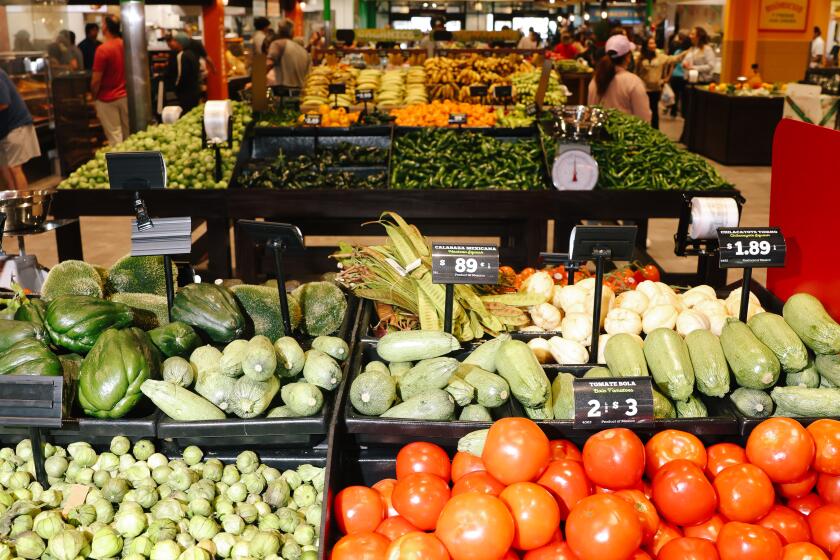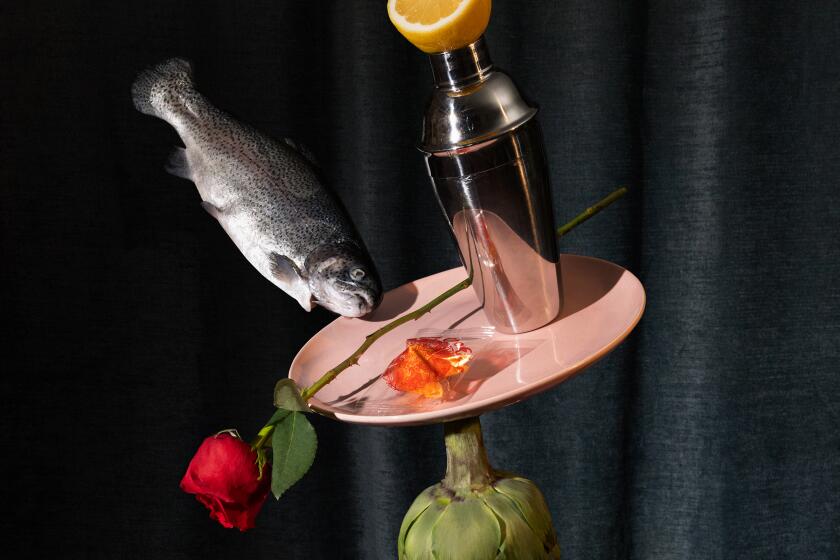Bonny Doon: The Wines Behind the Man : Tasting Notes: Evaluating Randall Grahm’s idiosyncratic product. He’s trying to reproduce the great but little-known wines of Southern Europe.
You can’t get a fix on Randall Grahm until you taste his wines, and even that won’t help until you understand his goal: replicating the great but little-known--and marginally understood--wines of Southern Europe in California.
Grahm gives his products clever, outrageous names and package designs, which at first glance might seem sheer lunacy for a premium-wine producer trying to get double-digit prices for obscure wines. And while many wineries publish a newsletter for their customers, none is like his Bonny Doon Winery newsletter. An issue might consist of an arcane text with philosophical overtones, depth-charged with puns, or possibly a rambling parody of Proust or Pynchon or Poe.
“I liked your latest newsletter, even though I wasn’t very good in philosophy,” I said recently when we met to look at his latest wines.
“Neither was I,” he said with a nod and a grin.
Yet it is Grahm’s philosophy of wine making that keeps him at the forefront of the new-wave wine makers. That philosophy emphasizes grape growing above wine-making skills. “Wine making is the trivial part of the equation,” he says. “You need true fruit, great grapes. That’s all.”
Take, for example, the only mainstream wine he makes, Chardonnay. We were tasting the 1988 Estate Bottled version, the penultimate vintage for this vineyard that is being converted to Rhone grape varieties. The wine is huge, with ripe tropical aromas of pineapple and grapefruit, combined with a butterscotch note and evidence of oak. It kind of reminded me of a banana split.
Grahm acknowledged the power in the wine, but said: “It’s a little awkward--kind of like a 280-pound linebacker in a tutu. I don’t know if it’ll be great or not so great in 10 years.”
Grahm is abandoning Chardonnay, not because he doesn’t like the challenge but because he truly likes the Rhone varieties better, and today he is the kingpin in the making of Rhone-type wines in the New World. It is Santa Cruz’s Bonny Doon by which all other American Rhone-style producers must rate their wares. Here is a look at some of the wines Grahm makes (note the small production of most of them).
-- 1988 Chardonnay Estate Bottled ($25, 500 cases) : Described above, with one added note of high acid to carry it into the future.
-- 1988 Chardonnay, La Reina Vineyard ($15, 2,000 cases): Slightly leaner and more delicate than the previous wine, with the backbone to age. A handsome effort.
--1988 Le Sophiste ($20, 250 cases) : This blend of Rousanne (for citrus rind and quince-like aromas) and Marsanne (for honey and dried apricot) makes for a broadly structured wine with traces of vanilla and spice. Otherwise it’s not fruity in the Chardonnay sense of the word. A sophisticate’s wine, as the name implies.
-- 1989 Vin Gris de Cigare ($7.50, 8,000 cases) : A landmark pink wine made from Mourvedre and Grenache with a strawberry and orange-blossom aroma, dry on the palate and perfect for summer sipping with picnic food. One of the best of the New Pink wines.
-- 1989 Clos du Gilroy ($7.50, 1,500 cases) : The red wine counterpart for the Vin Gris, a Beaujolais-style wine with a profusion of cherries, cranberries and grapiness, soft and complete. A red wine to chill and try with steak tartare.
-- 1987 Le Cigare Volant ($15, 3,500 cases) : A silly name for a serious wine, aimed at being like a Chateauneuf-du-Pape. It’s 75% Grenache with Mourvedre and Syrah for complexity, and the aroma has elements of roses, cherries, faint violets and pepper. This vintage has good body without the coarseness of some earlier versions. A wine to age so you can watch it mellow.
-- 1988 Grahm Crew ($10, 1,500 cases) : A bargain, since the wine is similar to Le Cigare Volant, though with a tad less concentration. Excellent flavors and a wine that will age for a few years and grow even more appealing.
-- 1988 Old Telegram ($20, 800 cases, released in September, 1990) : This all-Mourvedre wine has wonderful power and richness, with a blackberry-leafy aroma and a note of chocolate in the finish. Potent wine that should enhance steaks and other hearty dishes.
-- 1988 Syrah ($25, 50 cases, released in September, 1990, with a one-bottle per customer limit) : Grahm’s first crop from his own Syrah vineyard is truly sublime, and not as dark and potent as one might think. (The Old Telegram, for example, is bigger.) Here the fruit has more cherry and green leaf character with a hint of toastiness from oak aging. Because it’s so limited, the price is high--Grahm feels people will want to start a vertical collection beginning with the first. In time, he hopes to make 2,000 cases of the wine annually.
-- 1989 Vin de Glaciere, Riesling ($15 per half bottle, 400 cases) : Apple- and apricot-like aroma with amazing sweetness (just 11% sugar but with a richness that makes it seem sweeter), and a complex, aftertaste reminiscent of a German wine.
-- 1989 Vin de Glaciere, Gewurztraminer ($15 per half bottle, 1,000 cases) : Made from Oregon grapes frozen in a locker, this amazingly concentrated dessert wine is spicy, but with a piney, Alsatian tone to the fruit. It has 13% residual sugar.
-- 1989 Vin de Glaciere, Muscat ($15 per half bottle, 3,000 cases) : The 18% residual sugar in this wine makes it the sweetest of the three “icebox wines” Grahm makes, but the spice component is more exotic than in the previous wine, more like litchi nuts. It is remarkably well balanced.
-- 1987 Brandy Pot Distilled ($15, 1,500 cases) : Not a Bonny Doon production but a true bargain for Cognac lovers. This product was discovered sitting in a brandy producer’s bulk inventory after nine years of barrel-aging in American oak. Grahm bought and bottled it. It has a vanilla aroma and excellent “American whiskey” kind of aroma.
Grahm also makes two infusions, produced by adding alcohol to slightly fermented fruits. The Framboise has a raspberry aroma and concentrated sweet taste; the Marion is an amazingly syrup-like blackberry sipping liqueur that may also be used to cook with. (Grahm’s recipe: Mix equal amounts of the Marion and bittersweet chocolate in a sauce pan, heat and stir until mixed; pour over vanilla ice cream.) The infusions are $8 a half bottle.
Bonny Doon also markets three grappas that Grahm makes in the manner of aqua vitae , in which both pomace and wine are distilled to make the clear, dry liquid. The grappa from Muscat grapes (designated Moscato) reflects the spicy heritage of the grapes, and the one from Isabella (a native American grape variety) is even more pungent and complex.
More to Read
Eat your way across L.A.
Get our weekly Tasting Notes newsletter for reviews, news and more.
You may occasionally receive promotional content from the Los Angeles Times.






